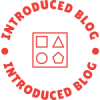Pressure is a crucial factor in various industries, ranging from manufacturing and engineering to healthcare and even personal well-being. Understanding whether your pressure is at an optimal level is essential for ensuring efficiency, safety, and overall performance. In this blog post, we will delve into the indicators that can help you determine if your pressure is okay, providing you with valuable insights to maintain and improve your operations.
- Monitoring Pressure Levels:
To assess if your pressure is okay, it is crucial to monitor pressure levels regularly. This can be achieved through the use of pressure gauges, sensors, or specialized equipment. By comparing the measured pressure against recommended standards or specifications, you can quickly identify any deviations or abnormalities. - Understanding Pressure Ranges:
Different industries and applications have specific pressure ranges that are considered optimal. For instance, in a hydraulic system, pressure levels should fall within a certain range to ensure efficient operation and prevent damage. By familiarizing yourself with the recommended pressure ranges for your industry, you can easily determine if your pressure is within acceptable limits. - Analyzing Performance and Efficiency:
Pressure plays a vital role in determining the performance and efficiency of various systems. By closely monitoring the output, productivity, and energy consumption of your equipment or processes, you can indirectly assess the adequacy of your pressure. A decline in performance or an increase in energy consumption may indicate that your pressure is not at an optimal level. - Considering Safety Factors:
In industries where pressure can pose safety risks, such as oil and gas or chemical manufacturing, it is crucial to ensure that pressure remains within safe limits. Regular inspections, maintenance, and adherence to safety regulations are essential to prevent accidents or equipment failures. Implementing safety measures, such as pressure relief valves or emergency shutdown systems, can provide additional assurance. - Utilizing Advanced Monitoring Techniques:
Advancements in technology have introduced innovative methods for monitoring pressure. For instance, real-time data acquisition systems and remote monitoring solutions allow for continuous monitoring and analysis of pressure levels. By leveraging these tools, you can detect pressure variations promptly and take immediate corrective actions, ensuring optimal pressure conditions.
Conclusion:
Determining if your pressure is okay requires a comprehensive understanding of industry-specific standards, continuous monitoring, and analysis of performance indicators. By closely examining pressure levels, considering safety factors, and utilizing advanced monitoring techniques, you can ensure that your pressure remains at an optimal level, leading to enhanced efficiency, productivity, and safety in your operations.

